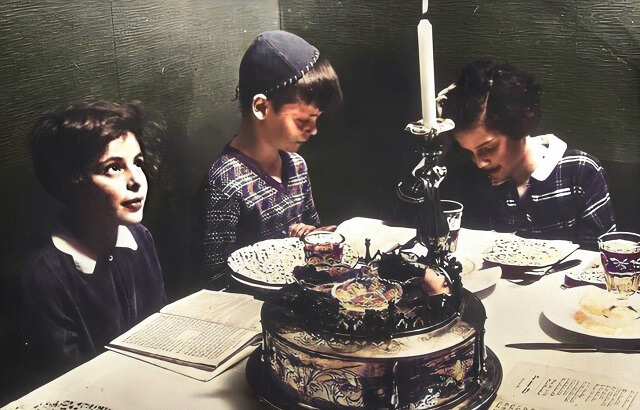
The Haggadah speaks of four children. Each one asks his own question, and each one receives a personal response. Education, the Sages taught, is not something that can be mass-produced like a Model-T.
The first child, the wise son, is troubled by the Torah’s abundance of rituals and minutiae. For the intelligent and rational, everything should be logical. What meaning can there be in these myriad details and rules? “What is the meaning of the rituals, rules, and laws that the Eternal our God has commanded you?” (Deut. 6:20)
Why All the Details?
In one brief query, the wise child has challenged the very foundations of a ritual-rich religion. Why do we need all of these details and halachot? Why is it not enough to be satisfied with Judaism’s basic tenets and fundamental teachings? The Haggadah’s response is enigmatic, ostensibly irrelevant to the question:
“You shall explain to him the laws of Passover: one does not eat any dessert after the paschal offering.”
Are we to explain to him all the laws of Passover? Or just this one rule about not eating after the paschal offering — or nowadays, the afikoman-matzah — has been eaten at the end of the meal? What is the significance of this particular rule?
The Seder Frog
I recall one year my six-year-old daughter was bursting with excitement, watching us unpack the Passover dishes. The special pots and pans that she fondly remembered from last Passover were back once again!
Then we uncovered a small piece of green felt fabric that fits over a finger. Once upon a time it sported two plastic eyes and even a little red tongue. Our eldest brought it home from kindergarten one year, and ever since it has graced our Seder table, making a special appearance during the passage about the plague of frogs.
This year, I wondered: would my daughter recognize this lump of green cloth, only on display for a few minutes each year? But I need not have worried. Her face immediately lit up as she spied the Passover Seder “frog.”
Etching the Mitzvah on Our Soul
Rav Kook explains that the detailed laws of mitzvot serve a crucial function. They create an atmosphere and enhance the mitzvah-experience. They deepen the impression the mitzvah makes on the soul. Our intense involvement in all aspects of mitzvot leads to deeper love of God, the ultimate Source for the Torah’s mitzvot.
Thus, for the wise and logical child, we specifically mention the rule about not eating after the afikoman. Why is matzah the very last food we eat on Seder night? We want the experience of Passover to make a deep and lasting impression. We want the taste of matzah to remain in our mouths for as long as possible. So we eat the afikoman at the very end of the meal, even after dessert.
The detailed laws surrounding each mitzvah etch the experience of that mitzvah onto our souls. Like the matzah on Passover, we want the taste of the mitzvah to stay with us as long as possible. Just as our own personal additions to Passover customs — even formless pieces of faded green felt — will conjure up images of frolicking frogs and past Passovers, evoking childhood memories of celebration and thanksgiving engraved deeply on the soul.
(Silver from the Land of Israel. Adapted from Olat Re’iyah vol. II, p. 275)





